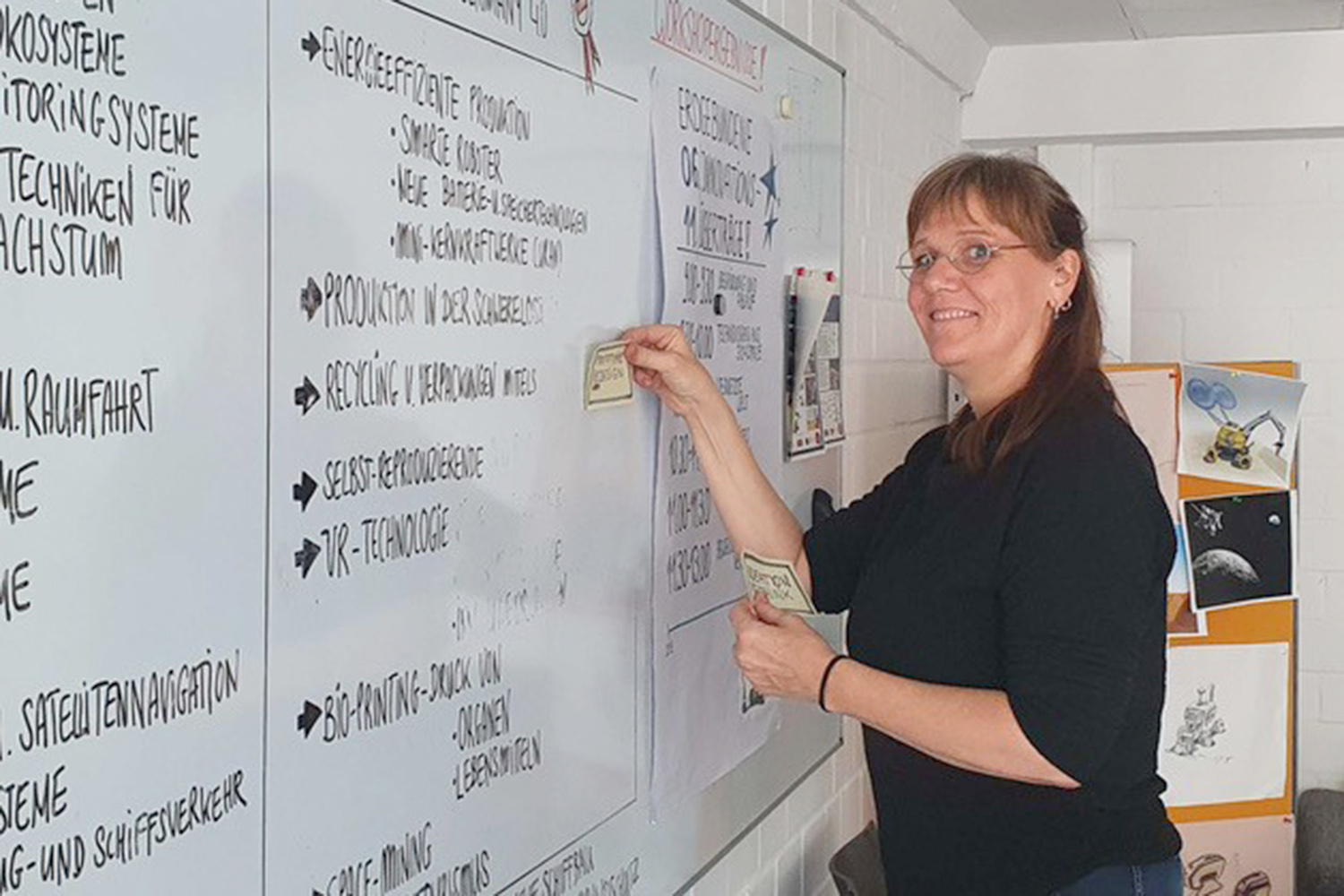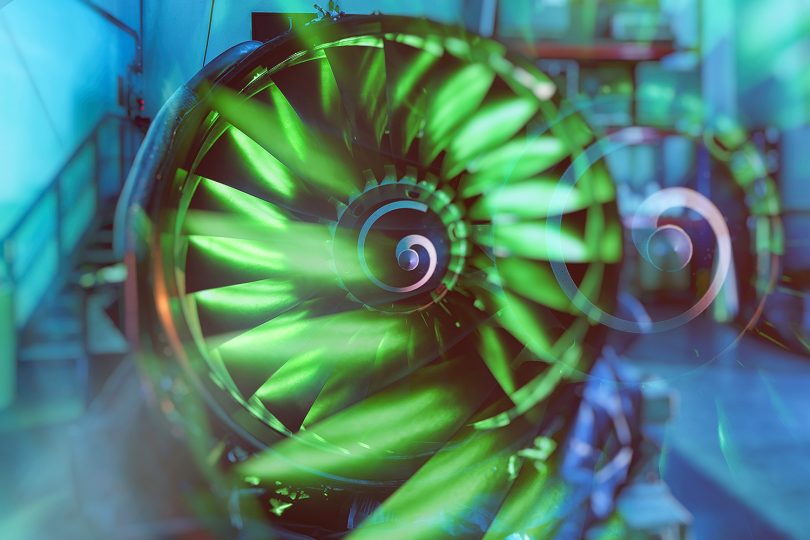Thinking in alternatives – the “futures researcher“ Future researcher Stefanie Ollenburg develops scenarios in the Cluster of Excellence SE²A
The future researcher Stefanie Ollenburg has been on board the Cluster of Excellence SE²A – Sustainable and Energy-Efficient Aviation – at TU Braunschweig since July 2021. The research associate and doctoral student at the Institute for Design Research under the direction of Professor Gerhard Glatzel at the Braunschweig University of Art (HBK Braunschweig) conducts scenario development and user research. Nicole Geffert met her.

Stefanie Ollenburg from the Braunschweig University of Art (HBK Braunschweig). Photo credit: Mehdi Mozuni
Mrs. Ollenburg, what does a future researcher do?
Actually, I see myself more as a researcher of futures, because there is no one future, but at least as many ideas about it as there are people. Therefore, scenario development is less about making predictions and more about generating knowledge for orientation and action. Future research results support actors in making responsible decisions in the present. In addition, we use the scenarios to create impulses, stimulate discussions between researchers, encourage them to change their perspective and think in terms of alternatives. I conduct research using both quantitative approaches and qualitative methods from design research. My focus is primarily on users and stakeholders, i.e. on people with their multi-layered wishes and needs. In the research work in the SE²A cluster, one question could be, for example: In which future aircraft design would travellers feel comfortable and which design would they rather reject?
How did you get into future research?
My CV is very dynamic. I studied Advertising Design at the University of Art in San Francisco. I then worked as an art director in international advertising agencies in New York, Berlin and Vienna and was self-employed as a concept designer for some time. The desire to initiate and help shape change processes was what drove me to study Futures Studies at the Freie Universität Berlin. There I encountered the field of transformation design, which is less about products and more about conceiving and designing change processes. After completing my Master’s degree, I worked at the FU Berlin as a research associate at the Institute Futur and later as a project coordinator in the Sustainability and Energy Unit. When I read the HBK’s vacancy, I applied immediately because the position combines future and design research. In addition, I have always had an affinity for technology.
What is the attraction for you of participating in the interdisciplinary research network SE²A?
The challenge is that we do not exclusively include the aircraft in our research, but the entire air transport system. The complexity makes the task particularly demanding and exciting. I like interdisciplinary research, as practised by the teams in the SE²A cluster. Future research generally works in an interdisciplinary way with scientists from education, sociology, psychology, economics, political science, linguistics and engineering. I’m looking forward to working with the engineers and scientists because I like to get to know new ways of thinking.

